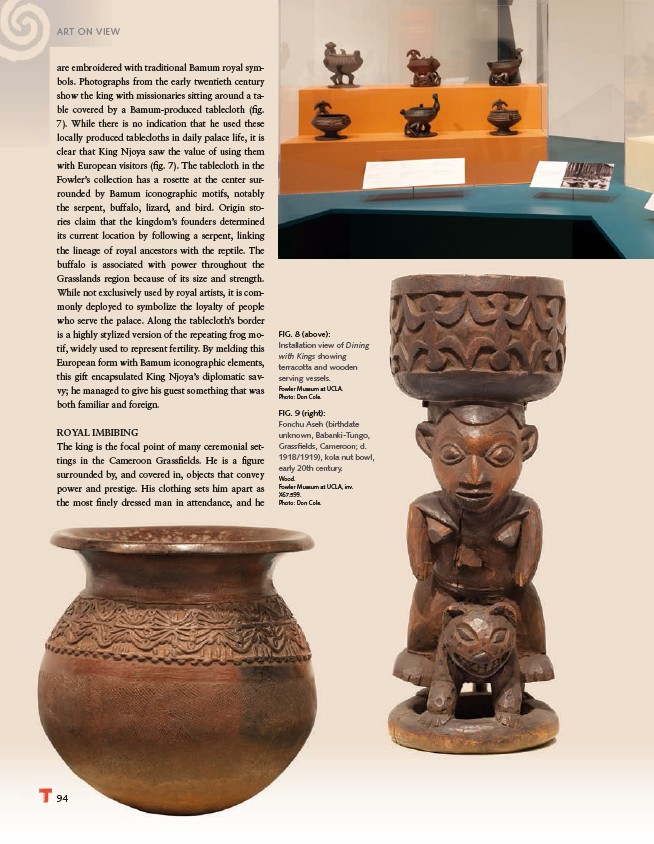
ART ON VIEW
are embroidered with traditional Bamum royal symbols.
94
Photographs from the early twentieth century
show the king with missionaries sitting around a table
covered by a Bamum-produced tablecloth (fi g.
7). While there is no indication that he used these
locally produced tablecloths in daily palace life, it is
clear that King Njoya saw the value of using them
with European visitors (fi g. 7). The tablecloth in the
Fowler’s collection has a rosette at the center surrounded
by Bamum iconographic motifs, notably
the serpent, buffalo, lizard, and bird. Origin stories
claim that the kingdom’s founders determined
its current location by following a serpent, linking
the lineage of royal ancestors with the reptile. The
buffalo is associated with power throughout the
Grasslands region because of its size and strength.
While not exclusively used by royal artists, it is commonly
deployed to symbolize the loyalty of people
who serve the palace. Along the tablecloth’s border
is a highly stylized version of the repeating frog motif,
widely used to represent fertility. By melding this
European form with Bamum iconographic elements,
this gift encapsulated King Njoya’s diplomatic savvy;
he managed to give his guest something that was
both familiar and foreign.
ROYAL IMBIBING
The king is the focal point of many ceremonial settings
in the Cameroon Grassfi elds. He is a fi gure
surrounded by, and covered in, objects that convey
power and prestige. His clothing sets him apart as
the most fi nely dressed man in attendance, and he
FIG. 8 (above):
Installation view of Dining
with Kings showing
terracotta and wooden
serving vessels.
Fowler Museum at UCLA.
Photo: Don Cole.
FIG. 9 (right):
Fonchu Aseh (birthdate
unknown, Babanki-Tungo,
Grassfi elds, Cameroon; d.
1918/1919), kola nut bowl,
early 20th century.
Wood.
Fowler Museum at UCLA, inv.
X67.599.
Photo: Don Cole.